To brighten up your free time, we have created a guessing game for you…naturally in full-on Musement style.
It’s summer and it’s hot, and we all want a little rest and relaxation. Whether this means tanning on a beach somewhere, long walks in the mountains, or even just cuddling up with a good book to the tune of some ambient background music, the important thing is to take a break from everyday life and take care of ourselves. This also means we get to laze around and spend time on fun and frivolous activities that we would otherwise feel guilty about any other time of year. The newspaper’s puzzles and games page is the epitome of such trivial pursuits: crossword puzzles, sudoku, riddles—nothing says “summer” like solving a crossword while whiling away at the airport, or waiting for your lunch to digest before taking a dip.
We wanted to bring some extra fun to your free time, whether you’re relaxing after a meal or waiting for a flight, so we thought of a game we can play together—-naturally, one with Musment’s unmistakable flair.
Below you will find descriptions of five mystery artworks on display in just as many mystery museums around the world. We give you some clues: one particular detail from the artwork itself and some interesting facts about its history, author, or composition. At the end of each paragraph, you’ll find the correct answer written in “invisible ink” (just move the mouse over the last line and click on the invisible words to see them).
Museum and artwork 1
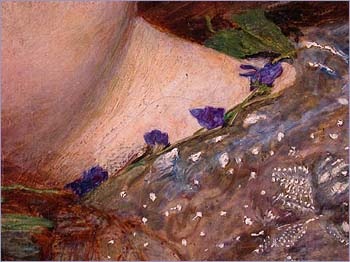
This particular museum houses one of the most famous paintings of the corpus left behind by the Pre-Raphaelite Brotherhood, an artistic movement with ties to the symbolism that can be seen as a manifestation of the broader Decadent movement. The Pre-Raphaelites were painters who had found a common enemy to fight: the academic tradition taught at the Royal Academy of Arts, and Raphael Sanzio whom they saw at its origin. They waged their battle by producing artworks marked by a nostalgic imagination, focusing on fairy tales and historical, social, Biblical and literary themes.
We’d like to dwell on the latter, as the painting we’re talking about portrays a famous tragic heroine born from the pen of Shakespeare. The character is portrayed immersed in water and with a garland of violets, which, like all the other types of flowers that surround her, have a specific meaning: they symbolize faithfulness, and directly recall one of the verses of the Bard, in Act IV, Scene V: “I would give you some violets, but they wither’d all when my father died. They say he made a good end”. After you admire this painting, treat yourself to a brilliant afternoon tea.
Solution:London, Tate Britain – Ophelia, John Everett Millais, 1851-1852
Museum and artwork 2
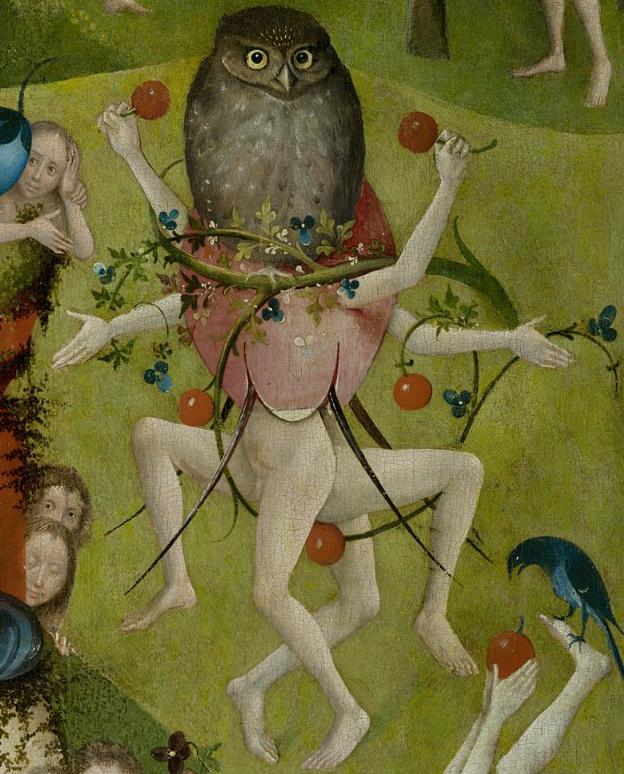
This museum houses one of the most complex paintings of all time. It is a triptych so labyrinthine that there is even uncertainty about the order in which one should view the three panels, which represent God’s encounter with Adam and Eve, a strange landscape that includes nude figures, imaginary animals, fruits and natural scenes, and the plight of the damned in Hell. The detail shown above represents the dreamy, surreal, grotesque, and chaotic, yet sublime mood that permeates the work: we see two dancing figures adorned with cherries, carrying a plant with an owl perched on it. The significance of this particular detail is downright diabolical: the cherries stand for lust and sin, while the owl is a demonic beast.
After racking your brain trying to understand all the hidden meanings of this work, refresh yourself with some tapas then follow in the footsteps of the Movida movement and enjoy the city’s nightlife.
Solution: Madrid, Museo del Prado – Hieronymus Bosch, The Garden of Earthly Delights, approximately 1480-1490
Museum and artwork 3
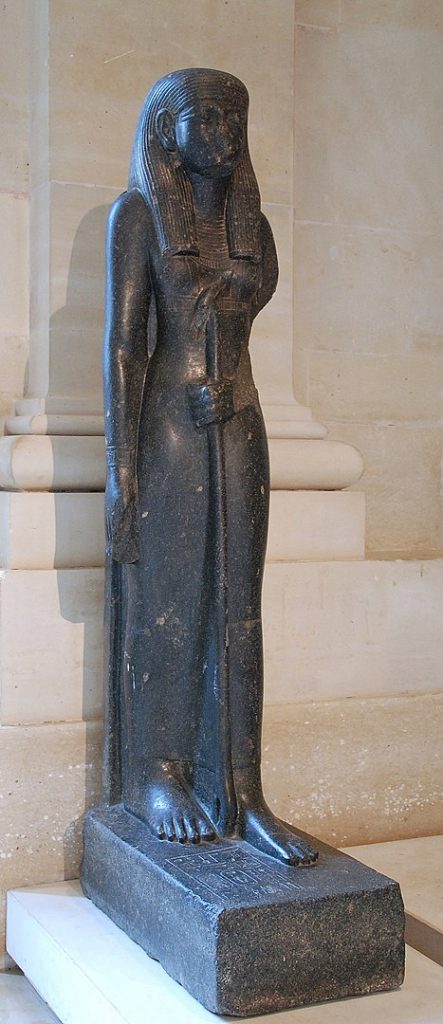
This is one of the world’s most famous museums that just so happens to house some of the world’s most famous artworks. But the one we’re talking about is not one of those—after all, what would be the fun in that? We will, however, say that in addition to some of the world’s most iconic artwork, the museum is home to a truly remarkable Egyptian art section: sarcophagi, mummies, tablets engraved with hieroglyphics, and sacred statues, like the one you see in the image. The author of this statue is unknown, but we know that the subject matter is the goddess who is the daughter of Isis and Osiris. The Egyptian wing of the museum also had a starring role in Luc Besson’s fantasy film “The Extraordinary Adventures of Adèle Blanc-Sec”, an adaptation of the graphic novel series by Jacques Tardi. In the movie, the mummies kept in the museum are awakened to heal the protagonist’s sister, and once that task is accomplished they wander off into the city, spreading terror everywhere.
Solution: Paris, Musée du Louvre – Nephthys in diorite, 1360/1350 BC
Museum and artwork 4
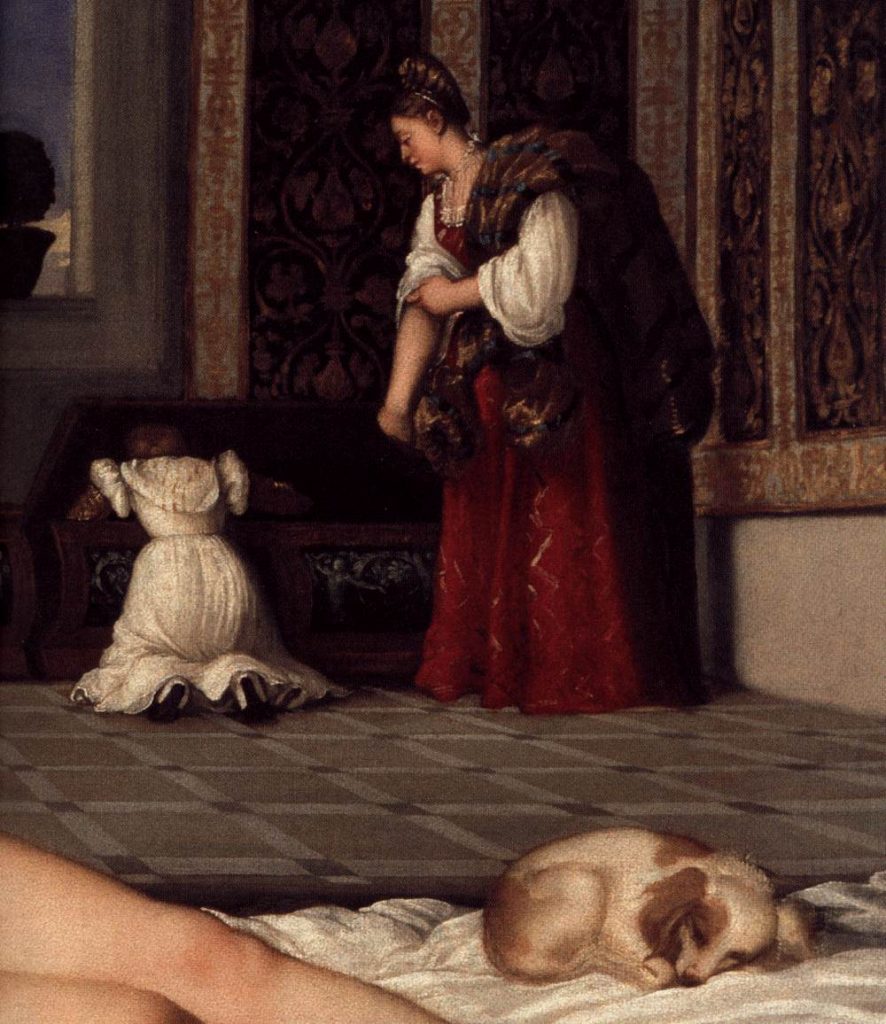
Venus stars in many of this museum’s paintings. However, the Venus depicted in the painting with the detail above is extraordinarily sensual compared to her counterparts: she is completely naked, looking the viewer straight in the eye while lying languidly on an unmade bed. This attitude, the very opposite of prudish, was enough to shock Mark Twain, who in 1880 called the work “the foulest, the vilest, the obscenest picture the world possesses”. Nevertheless, the painting was very well-received in its time and in subsequent centuries: many copies were made, and Monet referenced it in his famous Olympia. The sweet little dog at Venus’ foot is not only an adorable snuggly pet but represents the faithfulness that the bride must have towards her husband, of no lesser importance than sensuality. This message was aimed at Giulia Varano, the then-11-year-old wife of Guidobaldo II Della Rovere, the Duke of Urbino, for whom the painting seems to have been intended.
If you want to take a break before you continue exploring the city, you can’t go wrong with a stroll along the river and a taste of the famous local “bistecca”.
Solution: Florence, Uffizi Gallery – The Venus of Urbino, Titian, 1538
Museum and artwork 5
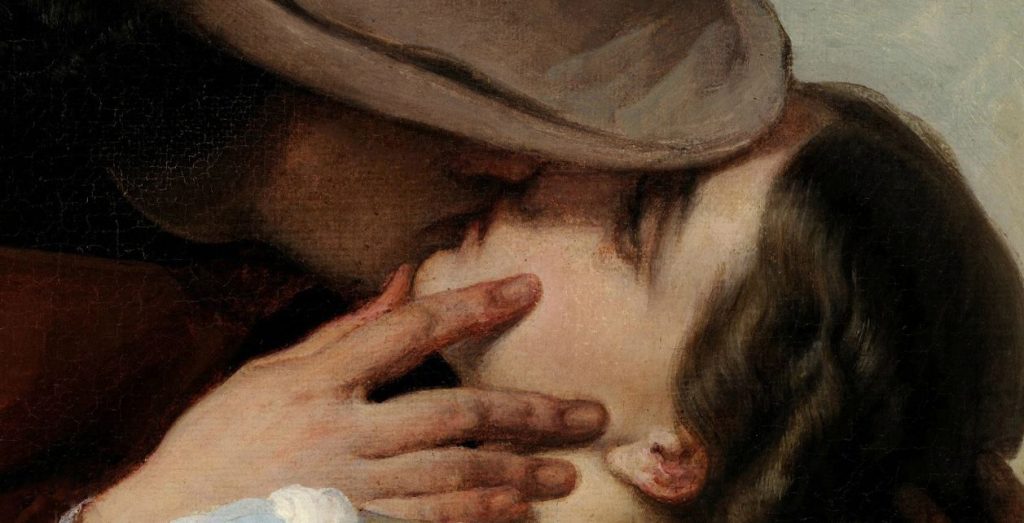
We end with a museum located in one of our most beloved cities, and—to keep with the theme of farewell—we have chosen a painting that is as romantic as it is heartbreaking. The detail above shows the faces of two young people kissing each other, but their bodies show great tension and discomfort: this kiss is most likely a goodbye. In the very same building where you’ll find the museum that houses this artwork, there is also an academy where young artists from around the world train.
Solution: Milan, Pinacoteca di Brera – The Kiss, Francesco Hayez, 1859
